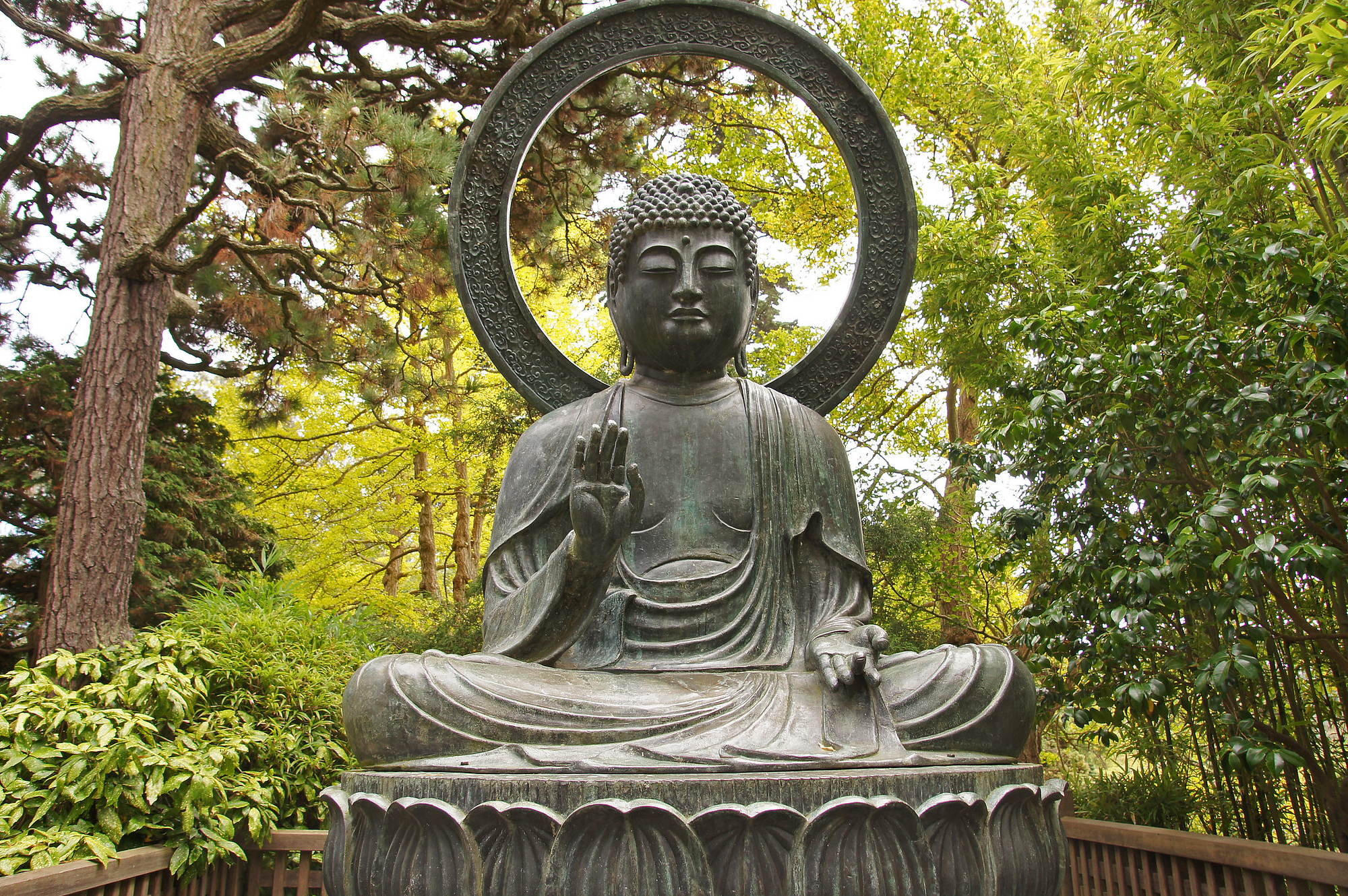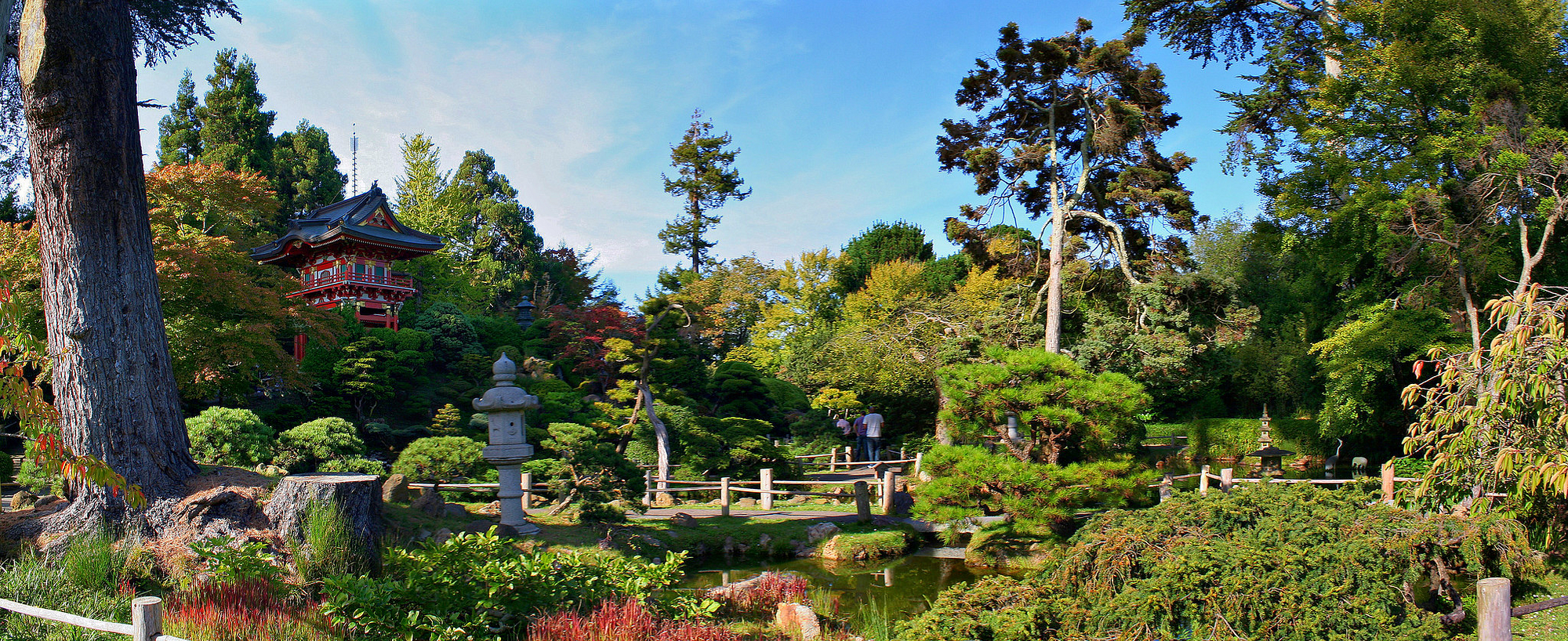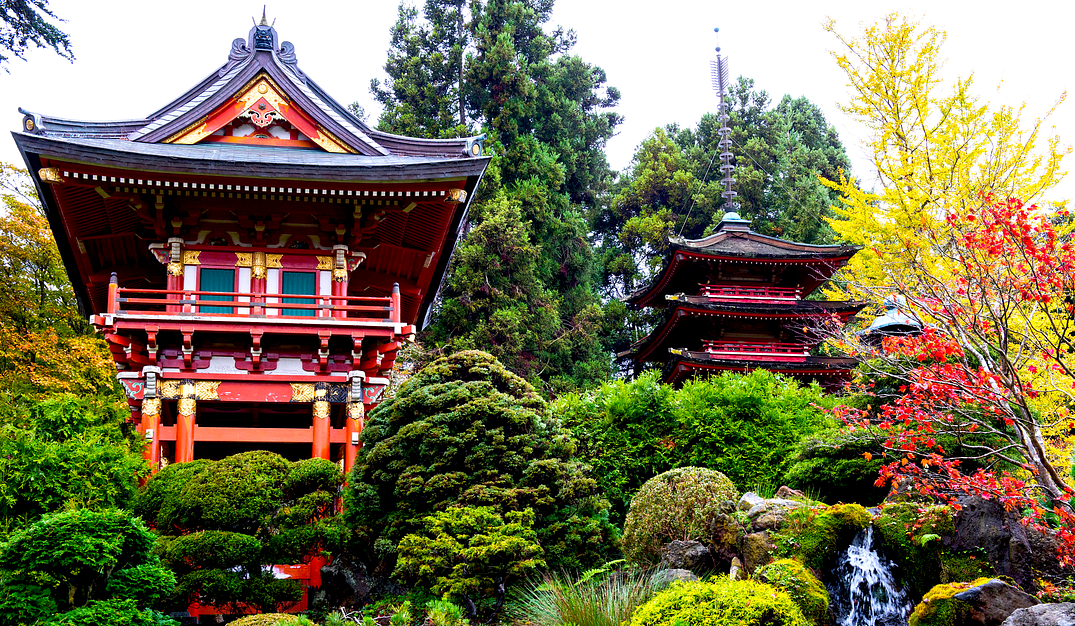This article is part of SF Throwbacks, a feature series that tells historic stories of San Francisco to teach us all more about our city’s past. It’s also an excerpt from Alec Scott’s book, Oldest San Francisco.
San Francisco’s Japanese Tea Garden began its life as the Japanese Village and Tea Garden concession at the 1894 California Midwinter Fair. Other countries had similar villages, but the most popular concession, the Japanese Tea Garden, was the only one to outlast the fair.
The oldest public Japanese garden in the US was designed originally by artist Toshio Aoki, who emigrated from Yokohama to San Francisco as a young man, and landed jobs as an illustrator and cartoonist, as well as a gallery to represent him. The owner of this gallery, George Turner Marsh, was an Australian who spoke fluent Japanese, and ran a famous Asian art store in Monterey.
Perhaps in part for cross-promotional purposes, Marsh built and operated the concession at the 1894 fair. At the fair’s end he retained businessman Makato Hagiwara to look after the garden, and the park’s commission confirmed his appointment going forward.


Under Mayor Jim Phelan, the city introduced a regulation declaring that those who were ineligible for citizenship could not hold city jobs — which blocked the employment of Asians — and Hagiwara was let go in 1901. Furious, he opened up a competing garden nearby. In 1906, the parks commission asked him to come back, only not as an employee, but as a concessionaire. After his death in 1925, his daughter Takano and son-in-law Goro ran it.
The Hagiwaras luck then turned bad — really bad. One moonlit night in 1934, their son George’s wife Aiko dowsed herself in gasoline and burned herself and her 11-month-old baby boy to death in the garden. And, after Pearl Harbor, the entire family was sent to an internment camp. At this time, the garden’s name was changed to the Oriental Tea Garden, Chinese workers brought in, and a Shinto shrine on site, demolished.
Many of the garden’s potted plants, including some small cypresses, had been purchased by the Hagiwaras — and were taken by garden designer Samuel Newsom for care-taking. (“He had studied in Japan from 1934 to 1939,” garden supervisor Steven Pitsenbarger says, “and was grateful for his time there, how good people were to him.”) After the war, the Parks Commission would not have the Hagiwaras back to live on the site, and offered them less money to run it.


Instead of returning, they auctioned off the tiny trees — some of which can live for centuries. A doctor and his wife, Hugh and Audrey Fraser bought the collection, willing it back to the garden after they died, where they now stand in mute tribute to their former owners, the longtime stewards of this place. Another tribute to the Hagiwaras is a small monument near the gates, done by Japanese-American artist Ruth Asawa, which has frogs crawling over a little boulder.
The garden’s fixed elements have asked for some love of late. Termites had gone at the tori, munching on the hinoki cypress wood from which it is built — with no nails. “Nail-free construction, something developed over centuries in Japan, can be better in an earthquake,” Pitsenbarger said.
The pagoda’s roof had lost its shingles, and the bells that once rang in the wind were gone. The funds were found to restore it — and to find new, appropriate bells. At this writing, stone to build new footings for the pagoda has just been delivered from a quarry in Takasago, Japan, with artisans booked to come over from there to carve and install the rock foundation.
Though the Japanese Tea Garden began as a fairground attraction, through the work of the Hagiwaras, and many others, it has become something more authentic, a longterm ambassador for the culture, a sign of persistence against high odds.
Alec Scott is an award-winning journalist, with features in The New York Times, Guardian, Smithsonian Magazine, Los Angeles Times and Sunset.
Learn more about Oldest San Francisco, his latest book with stories of the institutions that helped make San Francisco the place it is today.
The Bold Italic is a non-profit media organization, and we publish first-person perspectives about San Francisco and the Bay Area. Donate to us today.







